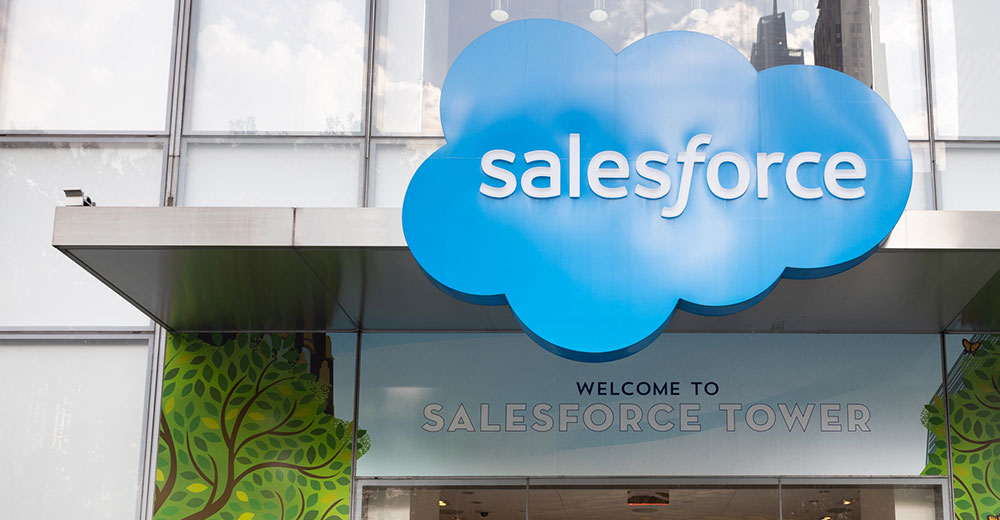It looks like we’re ending Salesforce Season. This is a new idea for me, and I think there may be two seasons in a year — the one we’re finishing and one that happens just before Dreamforce. Roughly speaking, these seasons happen when the company disgorges a raft of new technologies both to update existing products and to bring forth new ones.
This season covers a lot of ground, too. We’re seeing significant announcements in everything from sustainability to workforce management and vertical industry CRM solutions. I hesitate to use CRM as a modifier here, but the company long ago breached the retaining walls of our industry.
For instance, CRM is a template for almost any business process that can be mediated by a database application and analytics that turn random data into useful information. Following this loose definition, this spring, Salesforce introduced sustainability-oriented systems designed to help monitor and manage plastic pollution in the oceans and carbon pollution in the air.
I’ve written elsewhere that I don’t think this is enough. But that said, it’s hard to figure out how to go further without such systems — and you can tell they plan to go much further because, in each case, they’ve declared another cloud and hired a senior staff to pursue relevant goals. In other words, they didn’t stop with apps and call it a day.
New Tools for Back to the Office
As we all contemplate going back to the office in the weeks ahead, Salesforce has developed a raft of tools that will make the effort safer and hopefully less fraught. These tools help manage work and workflow and take a new look at the fundamentals of different industries.
Vaccine Cloud provided healthcare administrators with the tools they needed to manage the vaccination process and provide contact tracing. What’s more, if the politics can get sorted, there is an app to help people (please-don’t-call-it-a-passport) trace their vaccination status. The app and related solutions are integrated into the public sector offerings as well as more commercial solutions.
More in the for-profit world, new workforce management is aiming to make the contact center more responsive to customers and supportive of employees. Using analytics, the system helps businesses plan for workload and the changing needs for different skill sets, helping to ensure end customers have good experiences and that people with specialized skills can apply them where they’re most needed.
All this attention to customers and detail also drives operational efficiency in the contact center.
Then there are vertical industries. Salesforce started its vertical efforts five years ago, and it has been greatly accelerated by its acquisition of Vlocity, headed up by David Schmaier. If you don’t know, Schmaier spearheaded verticals at Siebel when it was an independent company. He reprised his role when he started Vlocity, and based on our conversations, I think he chose to work with Salesforce because its platform is robust enough to enable him to build the systems of his ambitions.
AI and Compliance
So, a few weeks ago Salesforce announced multiple additions across its cloud lines, especially the 12 industry clouds. It begins with Industry Success from Anywhere, a program that emphasizes the importance of digital tools for understanding customers and improvements for remote work, like new features in Virtual Sales and Execution for Consumer Goods Cloud.
Also, Salesforce has improved how it supports intelligent appointment scheduling for Health Cloud. Finally, there are improvements in industry-specific apps brought on by Einstein Relationship Insights, which uses Einstein AI to support best practices and compliance.
I suspect compliance will only gain in importance as vendors continue to penetrate previously intensively regulated processes. The idea that this will cost jobs is up in the air. With compliance increasingly automated, it will likely free up people to face customers more directly, and that’s not a bad idea.
There’s more too, and you can get it at the website.
My Two Bits
The more important idea to me is that Salesforce has been trying to redefine many industries for a while now. The vertical-industries push is five years old, and the company has been innovating for over twenty.
Adding analytics and making solutions available anywhere is not just smart business; it’s liberating. It liberates customers to follow their dreams and get the optimum products and services for them. But also, liberating employees from so much rote work gives them the tools they need to do more and better work. Maybe that adds to job satisfaction and retention.
If you are a creative type, in business, technology, or just a consumer, working with Salesforce might be a good strategy. You just need to keep up with the releases.

















































Social CRM
See all Social CRM